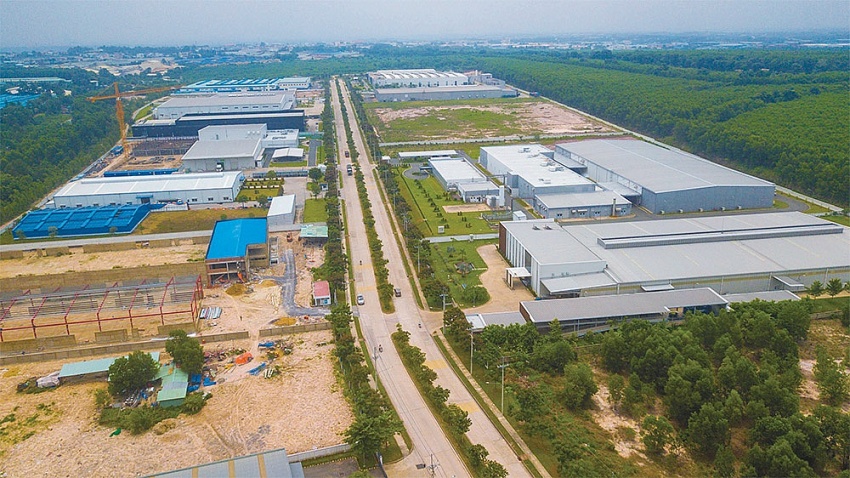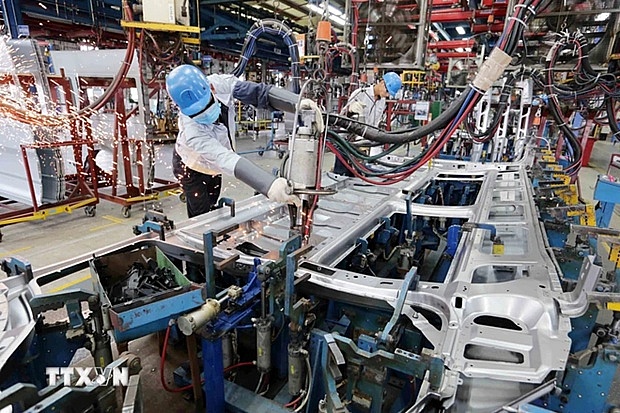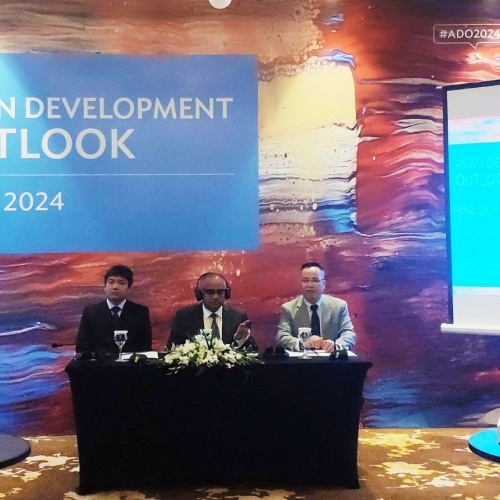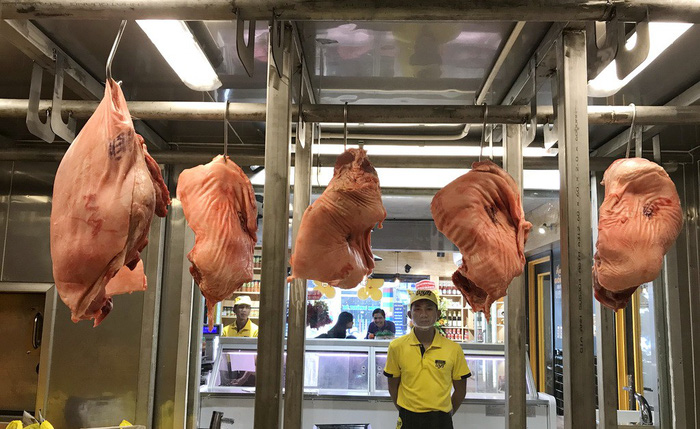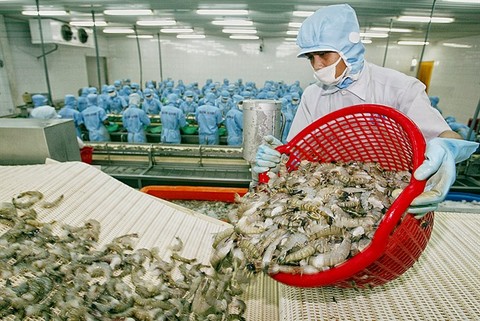The CPTPP is not just TPP version 2.0
The CPTPP is not just TPP version 2.0
Last week’s signing of the Comprehensive and Progressive Agreement for Trans-Pacific Partnership (CPTPP) is expected to yield better trade, and bring about opportunities for companies in Vietnam to strengthen themselves in overseas markets. Nevertheless, there are a number of challenges in joining this new playing field. Professor Nguyen Mai, former vice chairman of the State Committee for Cooperation and Investment (now the Ministry of Planning and Investment) gives a multifaceted analysis of the new-generation free trade agreement.
Differences
The Comprehensive and Progressive Agreement for Trans-Pacific Partnership (CPTPP), regarded as a new-generation free trade agreement, is predicted to take effect from early 2019. As such, it means that Vietnam’s state agencies, enterprises, and people only have about 10 months to make preparations to be on par with the agreement.
Without the participation of the US, the CPTPP is inevitably different from the Trans-Pacific Partnership Agreement (TPP). Specifically, 20 TPP provisions in the fields of investment, intellectual property, and others have been suspended. Most of them are related to the US market, or are the outcomes of reform pressure from those in agreement with the US.
Once the CPTPP comes into force, the parties will defer the implementation of the provisions listed in the agreement’s annexes, until they have agreed to terminate the suspension of one or more of the provisions.
According to Japan’s Minister for Economic Revitalisation, the suspension of some provisions is the easiest way for the parties to continue with the implementation.
Regarding intellectual property, the TPP was expected to invalidate some of its member countries’ laws and practices in protecting new pharmaceuticals from competition with generic drugs. Under the CPTPP, there is no requirement for members to change laws and practices for new pharmaceuticals, including bio-productions. The CPTPP members also agreed to suspend the obligation to extend patent terms in the event of unreasonable delays in granting patents or in licensing the import of certain drugs.
In addition, some intellectual property provisions included in the TPP have also been suspended in the CPTPP. For example, member countries no longer have to extend the duration of lifetime copyright protection from 50 years to 70 years, which will reduce tangible costs for CPTPP members compared to the TPP. A total of 11 TPP intellectual property provisions were suspended in the CPTPP.
The scope of the investor-state dispute settlement (ISDS) mechanism is narrower in the CPTPP. Under the CPTPP, private companies that enter into an investment contract with the government will not be able to use ISDS clauses if there is a dispute about said contract.
It should be noted that local companies may not use ISDS to sue the host government, but may use it to sue the government of another CPTPP member country. ISDS only deals with disputes over investment-related provisions of the CPTPP.
Moreover, these companies have no authority to dictate how ISDS panels are formed. An ISDS panel includes three arbitrators: one appointed by the government, another by the claimant, and a presiding arbitrator appointed by the government and the claimant together.
Under the TPP, the GDP of countries ratifying the agreement had to reach 85 per cent of the total GDP of the 12 signatory countries for the deal to take effect. In its stead, the CPTPP requires only six member countries to ratify the agreement.
Of note, the CPTPP has removed the 85 per cent cumulative GDP threshold requirement for TPP ratification by stipulating that the new-generation agreement could be triggered once six out of the 11 members have completed their domestic ratification process, regardless of the cumulative GDP.
The CPTPP is a new-generation FTA which is superior to previous ones. During TPP negotiations with the US as a key member, many other countries, including Vietnam, had to make concessions towards a number of provisions related to intellectual property, labour, and unions, as required by the US. Therefore, the suspension of 20 of these provisions will be beneficial for Vietnam.
Among the obligations to be suspended, other members have agreed to allow Vietnam to exempt certain important commitments related to intellectual property, investment, government spending, financial services, and telecommunications.
New markets
The US was the mainstay of the TPP. With US participation, the deal grouped together 12 countries with a combined GDP accounting for 40 per cent of global GDP, and with a total population of more than 800 million people. Without the US, the CPTPP market makes up only 13.5 per cent of global GDP, with 489 million people. Vietnam and other member countries were targeting the US market when entering into the TPP agreement. The US withdrawal from the TPP naturally caused the calculations and expectations of each country in the CPTPP to change.
According to the National Center for Forecast Studies, when the TPP was to include the US, Vietnam would have reaped a great deal of benefits, including an expected GDP increase of 6.7 per cent, and export growth of 15-17 per cent. With the CPTPP, these estimates have been adjusted to 1.32 per cent and 4 per cent respectively. Nevertheless, how things will eventually turn out still greatly depends on real-life developments in the country and across the globe.
Vietnam has signed many FTAs with other CPTPP member countries, so the CPTPP would leverage more of Vietnam’s trade and investment access in CPTPP territories, especially regarding potential markets in the Pacific such as Canada, Mexico, and Peru – none of which are subject to existing trade agreements with Vietnam.
Challenges to trade
Twenty-three years after Vietnam made its integration into the regional and global markets in 1995, local enterprises have been growing well. It is still important, however, for the country to renovate its institutions, reform national administration, enhance investment in science and technology, improve quality of skilled human resources, and raise the competitiveness of all three aspects: products, enterprises, and nation.
The same applies to participation in the CPTPP. If we are well prepared for macroeconomic management, and ready to create favourable conditions for business and investment, the opening of the market will benefit both businesses and the people.
However, some of Vietnam’s products – particularly its food products – will face greater foreign competition in the domestic market. Juan Carlos Domínguez, executive director of the Asprocer Association, predicted that Chile’s 2017 pork exports to CPTPP countries – standing at $141 million – might go up by 10-15 per cent when the agreement comes into force.
According to Heinz Reimer, vice president of the Canadian Cattle Breeders Association, the CPTPP will open the door for Canadian beef to enter Vietnam. This would enable Canadian farmers and food processors to achieve the ambitious target of increasing the country’s total annual export value of agricultural products to at least CAD75 billion ($60.7 billion) by 2025.
The above predictions mean that Vietnamese enterprises need to make further investments in technology and production processes to compete with products from CPTPP members in the domestic market. At the same time, to make the best use of opportunities arising from the CPTPP, the country’s agricultural firms need to rapidly step up the export of their products and foodstuffs to CPTPP member states.
Investment attraction
The CPTPP provides a fairly comprehensive chapter on cross-border investment, including principles relating to most-favoured nation treatment, the transparency and disclosure of information, the rights of investors and investment recipients, and settlement of disputes.
Vietnamese laws have already set forth quite appropriate regulations on investment. However, attention should be paid to three demanding requirements prescribed in the CPTPP: the publicity, transparency, and predictability of the legal system and changes of law (a disadvantage for Vietnamese law); strict regulations on intellectual property rights, despite the suspension of some related provisions such as those regarding pharmaceuticals; and labour and worker rights, including the right to form independent unions. These requirements demand the amendment of various articles in legal documents on investment.
The CPTPP facilitates cross-border investment, enabling Vietnam to lure more investment from other member countries, especially from the likes of Canada and Mexico, with whom Vietnam does not have FTA agreements. In the other direction, this constitutes an opportunity for Vietnamese companies, especially big groups, to seek investment opportunities in CPTPP countries.
It should be noted that foreign investment will continue to flow into Vietnam, but the focus should be placed on selecting or prioritising projects that could potentially bring about benefits and efficiency. Vietnam ought to end unfair competition among localities that hope to lure in investments through the provision of excessive incentives. This naturally minimises national interests.
In order to attract foreign investment, it is necessary to approach the provisions of the CPTPP’s investment chapter to make necessary adjustments and supplements to the Vietnamese legal system.
Regarding intellectual property
Former Minister of Science and Technology, Nguyen Quan, who took part in most of the rounds of TPP negotiations on intellectual property, indicated that Vietnam faces three major challenges when it comes to intellectual property: there is no regulation that criminalises violations of intellectual property, as is required by the CPTPP; protection of medicines, especially the protection of test databases; and issues related to agriculture.
As such, intellectual property remains a big test for Vietnam. To earn benefits from the CPTPP, Vietnam needs to amend and supplement the Intellectual Property Law in accordance with the provisions of the agreement. At the same time, the challenge should be considered an incentive to better implement legal documents on intellectual property protection, counterfeit, and trademark violations.
Business opportunities
Enterprises can be considerably affected by FTAs, including the CPTPP.
Firstly, they need to actively learn about the CPTPP in order to firmly grasp the commitments of Vietnam and its partner markets within the framework of the agreement, especially regarding information on preferential tariffs.
Enterprises also need to change their way of doing business, considering competition pressure as the driving force for innovation and development. The CPTPP will certainly provide them with more opportunities to actively build and adjust their medium- and long-term business strategies, with a focus on increasing the research and application of science and technology, and on maximising the potential of state support.
Elsewhere, enterprises need to actively promote trade and investment, select markets and partners for additional capital, access modern technology from large economic groups, and effectively participate in the global supply chain.
Last but not least, they ought to attach importance to intellectual property registration for the inventions, trademarks, trade names, and industrial designs they have developed. Localities and their businesses need geographical indications to be protected in CPTPP member countries.


